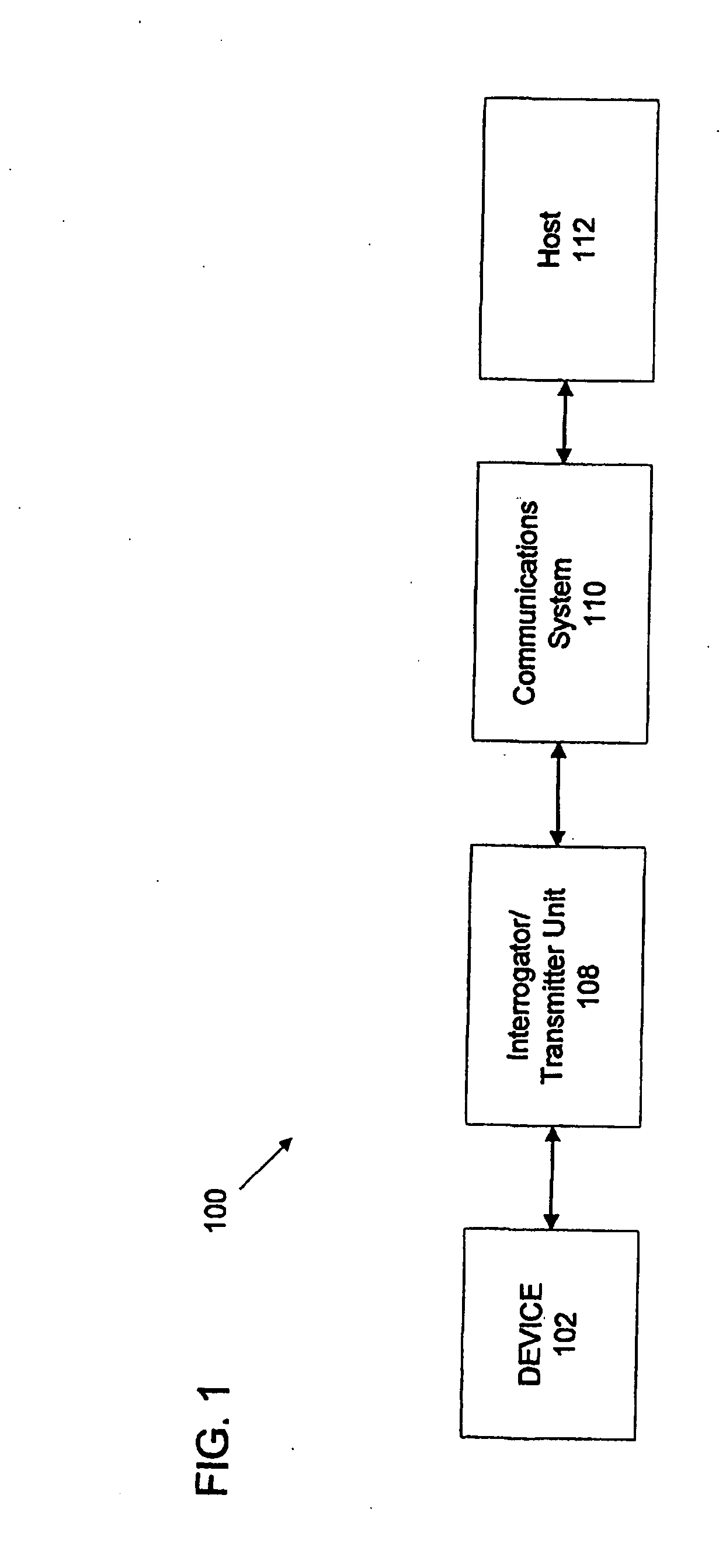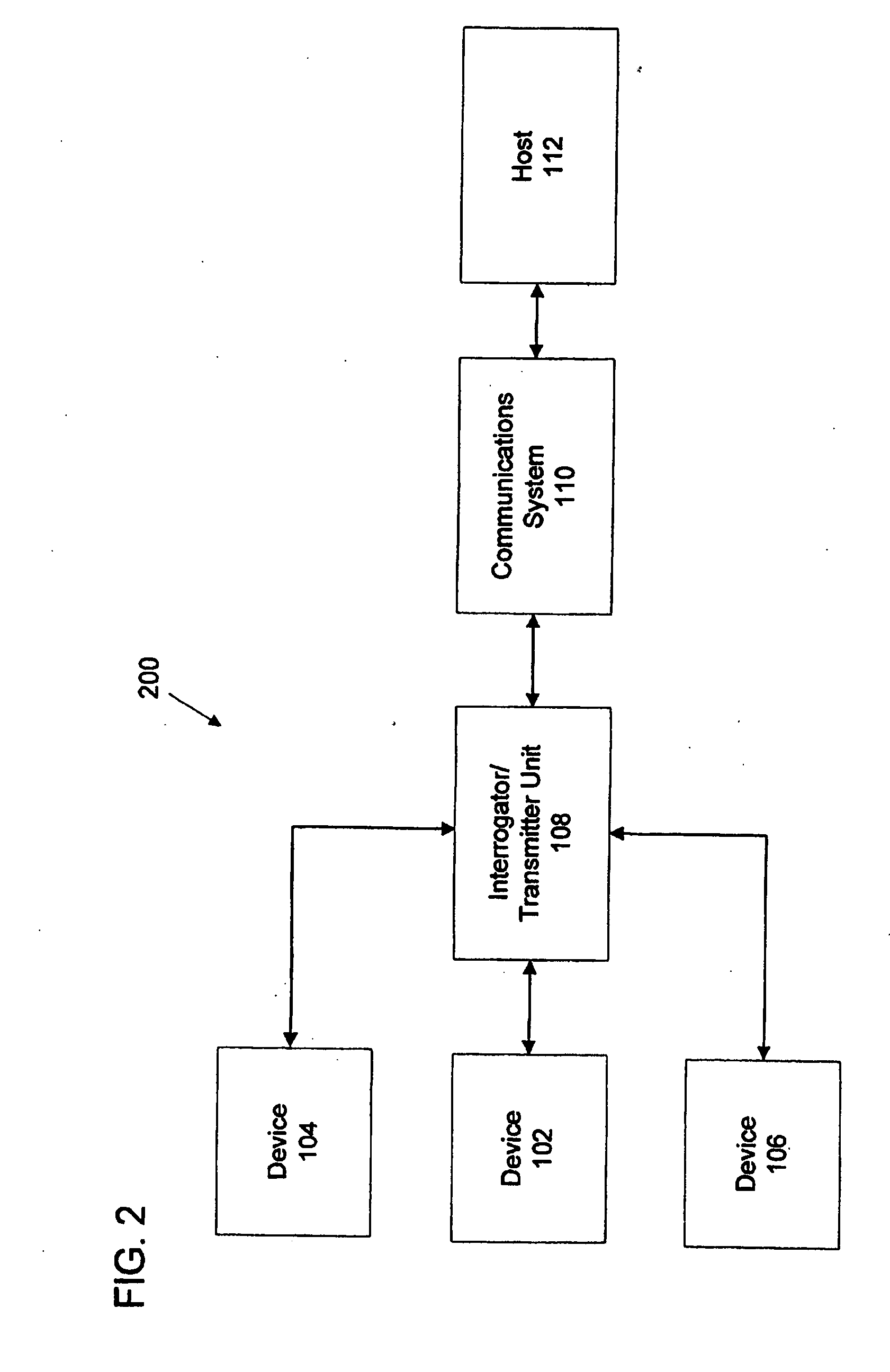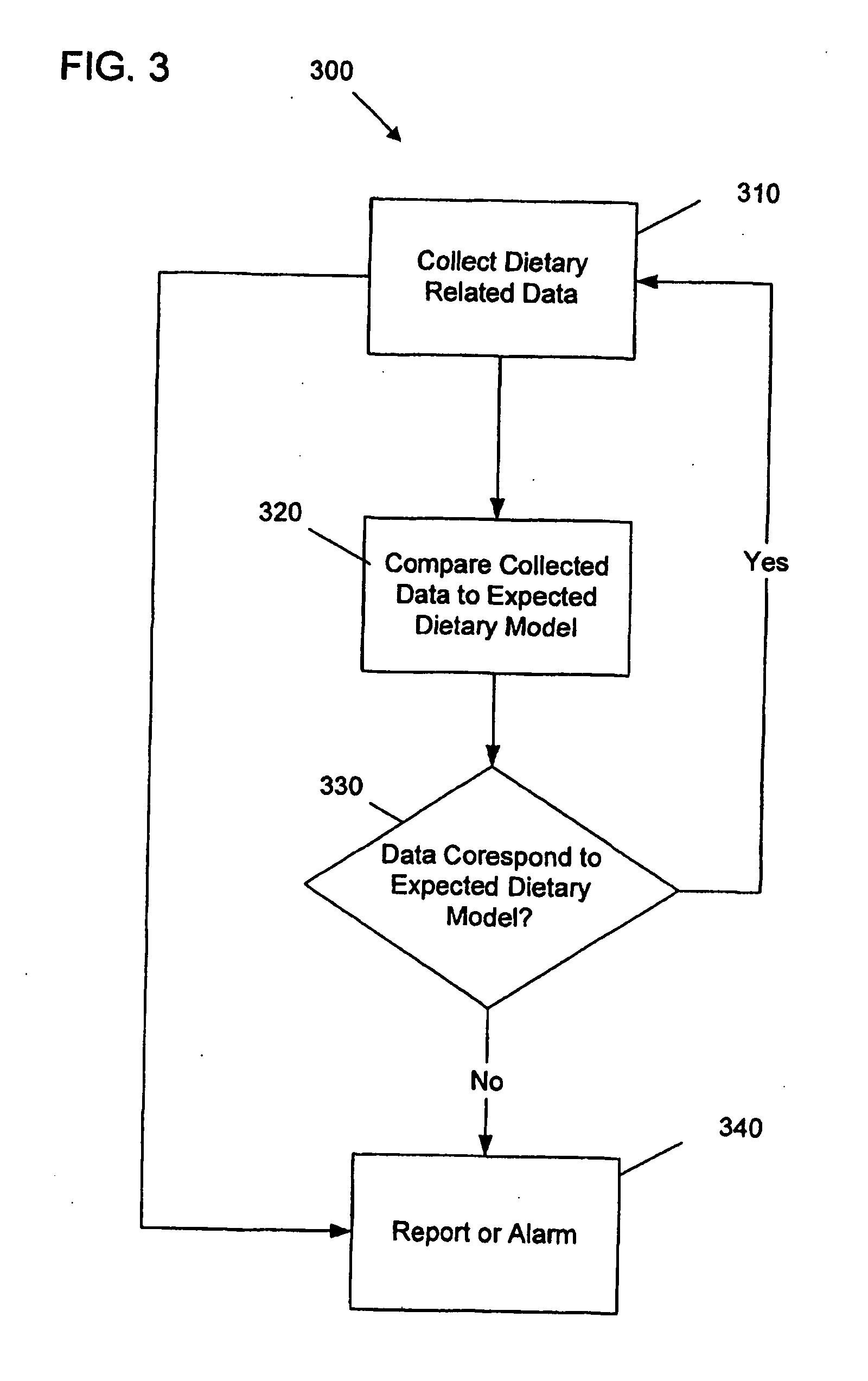Dietary monitoring system for comprehensive patient management
a comprehensive and patient management technology, applied in the field of comprehensive patient management systems, can solve the problems of hospitalizations consuming a large portion of the total health care expenditure allocated, the management of patients with chronic diseases consuming a significant proportion of the total health care expenditure, and the burden of over $20 billion in total health care expenditur
- Summary
- Abstract
- Description
- Claims
- Application Information
AI Technical Summary
Benefits of technology
Problems solved by technology
Method used
Image
Examples
Embodiment Construction
[0021] The present invention generally relates to monitoring and communicating a patient's dietary conditions. More specifically, the present invention relates to systems and methods for measuring data associated with a patient's dietary conditions, and comparison of that data to expected dietary conditions. Based on this comparison, one or more actions can be performed including, but not limited to, providing feedback (e.g., recommended nutritional intake, exercise, and drug therapy) to the patient related to their dietary condition, reporting to a physician, issuing an alert, or creation of new dietary models / algorithms. While the patient's own input of dietary information into the system can be useful for the comparison or for verifying sources of measured data, the system is configured to perform accurately even in the absence of patient input or the input of incorrect information by the patient.
[0022] As used herein, the term “patient” is used to mean any individual from whom ...
PUM
 Login to View More
Login to View More Abstract
Description
Claims
Application Information
 Login to View More
Login to View More - R&D
- Intellectual Property
- Life Sciences
- Materials
- Tech Scout
- Unparalleled Data Quality
- Higher Quality Content
- 60% Fewer Hallucinations
Browse by: Latest US Patents, China's latest patents, Technical Efficacy Thesaurus, Application Domain, Technology Topic, Popular Technical Reports.
© 2025 PatSnap. All rights reserved.Legal|Privacy policy|Modern Slavery Act Transparency Statement|Sitemap|About US| Contact US: help@patsnap.com



